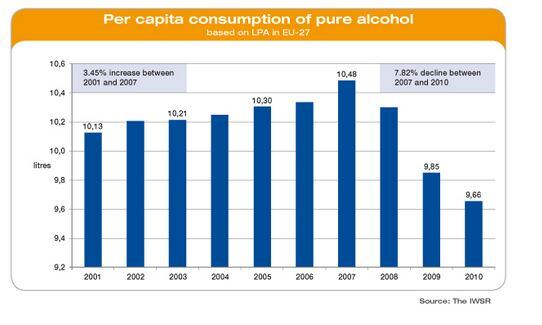Newly published Eurostat figures revealed that in 2014, European spirit exports declined for the third year running, largely due to sluggish GDP growth. Despite this dip in recent years, spirit exports have doubled over the last decade to almost €10bn, indicating that this export sector remains strong, according to spiritsEUROPE.
Historically, the US, Singapore and Russia have been the biggest export markets for European distillers. In 2014, these countries accounted for €3.3bn, €0.8bn and €0.6bn of export sales respectively.
But if the sector can tap into latent potential in China, India, Thailand, Brazil and Vietnam,
the map for EU exports looks set to be redrawn, according to a report “Growth driver: trade, trade, trade” published last week by spiritsEUROPE.

“There are many untapped markets that offer huge potential such as India - where consumption of imported products is less than 1% compared to 99% for domestic products,”said Paul Skehan, director general of spiritsEUROPE.
Restricted entry
However, high import tariffs, discriminatory tax policies, insufficient IP (intellectual property) protection and complex customs procedures currently make it difficult for EU distillers to penetrate these markets.
For example, exports to India are currently subject to a crippling 150% import tariff, whilst tariffs of 60% in Thailand and 45% in Vietnam are also prohibitive for exporters. Skehan said that significant progress can only be made with a reduction of these “punitive import tariffs”.
“Import tariffs applied on spirit drinks remain high in many markets, especially in emerging economies that have large, highly concentrated domestic spirit industries. The fact that tariffs are also applied on the value of the goods amplifies the adverse impact on high value EU spirits,” Skehan wrote in the report.
In China, non-transparent and discriminatory standards are a problem, said the report. Since 2013, Chinese authorities require laboratory test reports confirming that certain phthalates (plasticizers) do not exceed permitted levels in spirits. This measure was approved without any formal announcement or prior consultation with trading partners.
The report also cited discriminatory internal taxation as a long-standing obstacle to European spirits producers in some markets; not only do they contravene GATT (General Agreement on Tariffs and Trade) rules, they also stimulate non-commercial alcohol consumption when set at excessive levels. In Colombia, for example, products bottled at 35°C or less (ie domestic products) are taxed at a lower rate than spirits bottled above 35°C (i.e. mainly importer EU spirits).
Levelling the playing field
spiritsEUROPE believes that such barriers need to be broken through a bilateral trade agenda focusing on high growth markets, trade agreements that improve market access and the effective enforcement of existing international and bilateral trade rules.
“While not losing sight of our traditional large export markets such as the US, the bilateral agenda should help seize opportunities in markets where considerable potential remains untapped, such as Asia, Latin America and Africa,” said Skehan.
He continued: “Increasingly, the difference will be made in tackling non-tariff barriers effectively. Beyond tariff liberalization, a new generation of trade agreements should cover a wider range of issues, including certification procedures, customs cooperation, regulatory convergence and investment protection.”
spiritsEUROPE is hopeful that the EU Commission’s new trade strategy, due to be released in autumn, will create the necessary “offensive and ambitious” framework for lifting barriers and facilitating trade with these markets.
